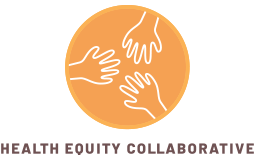22 May The 340B Program’s Uneven Expansion: A Health Equity Crisis?
Today, the Health Equity Collaborative released a new report highlighting the rapid growth of the 340B Drug Pricing Program over the past several decades. The 340B Drug Pricing Program was established to be a lifeline for safety-net healthcare providers serving our nation’s most vulnerable populations. By providing discounted drug prices, the program aims to empower providers to offer more comprehensive care to low-income, uninsured, and underserved communities.
However, growing concern over the growth of the program and documented abuses by hospitals and contract pharmacies has many community leaders and advocates wondering if the 340B is beginning to operate more like a hospital mark-up program than one that provides meaningful drug discounts.
The sheer growth of the 340B program, both in the number of participating entities and the volume of discounted drugs, raises questions about oversight and accountability. A recent report from the Congressional Budget Office found that from 2010 to 2021, 340B spending grew 19% annually, rising to 43.9 billion dollars in US spending. In 2023, discounted drug purchases through the 340B program reached a record $66.3 billion, a 24% increase year-over-year.
The growth of contract pharmacy arrangements to distribute 340B drugs is also raising alarm bells. Between 2010 and 2022, the number of 340B-eligible pharmacies participating in contract arrangements grew from less than 1% to more than 40%. This practice adds another layer of complexity to the current system because these pharmacies often lack clear pricing and dispensing practices to ensure discounts reach needy patients.
The exponential growth of the 340B drug pricing program has inadvertently created incentives for profit-seeking behavior. For example, the New York Times has reported on the expansion of 340B eligible facilities into more affluent and predominantly white areas of the country, rather than in communities of most need. There have also been alarming reports of aggressive medical debt collection actions by 340B eligible hospitals and facilities, a practice that disproportionately impacts low-income families.
There is growing evidence that low-income and vulnerable patients are actually paying more for drugs than they should be.
A new report from Milliman analyzing commercial and Medicare outpatient drug spending at 340B participating hospitals found:
- Medicare fee-for-service patients see an almost 3x increase in the cost of their medicines at 340B hospitals;
- All patients are on average billed up to almost 4x more for medicine at 340B hospitals than non-340B hospitals;
- And Hispanic Medicare patients are on average billed up to 5x more for medicine at 340B hospitals, suggesting Latino populations disproportionately face higher costs.
For communities that already face significant barriers to accessing quality healthcare, the 340B Program’s shortcomings can have dire consequences. These communities often experience higher rates of chronic disease, limited access to healthcare services, financial hardship due to medical costs, and distrust of the healthcare system. When a program designed to support these communities doesn’t function as intended, it can further exacerbate existing health disparities and erode trust.
Ongoing abuses and the lack of robust oversight threaten to undermine this vital program and exacerbate existing health disparities. Addressing the deficiencies through mandated reporting, ensuring direct patient benefit from savings, and implementing robust oversight mechanisms can significantly strengthen the program to foster genuine health equity outcomes.
In our new report, we recommend that Congress adopt the following reforms:
- Implement stricter oversight and transparency requirements
- Clarify eligibility requirements
- Strengthen compliance enforcement
- Ensure patients benefit
- Limit the use of 340B by certain entities
- Increase data collection and public reporting
The 340B program can be a powerful tool for advancing health equity, but only if it’s reformed and strengthened. The exponential growth in program size, alongside mounting evidence of distorted incentives, increased costs for commercially insured patients, and a lack of transparency in how discounts are utilized, underscores the urgent need for reform actions. Moving forward, policymakers must prioritize transparency, accountability, and a clear definition of patient benefit to ensure the program genuinely serves its intended purpose.
For more information, please read HEC’s full report on the 340B program here: https://healthequitycollaborative.org/wp-content/uploads/2025/05/May-2025-Special-Report.pdf


